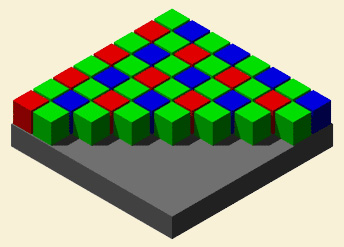
-
Mike
Original contents copyright 2012 by Michael C. Johnston and/or the bylined author. All Rights Reserved. Links in this post may be to our affiliates; sales through affiliate links may benefit this site.
(To see all the comments, click on the "Comments" link below.)
Featured Comments from:
David Ralph: "A search of the Rochester newspaper, the Democrat and Chronicle, reveals that Bryce Bayer's passing eluded their attention. Not that much different than Kodak's own appreciation for the import of the invention."



Curious that I know something about him the day of his decease. I mean, I knew about the Bayer sensor but I never search about the inventor. Anyone knows if he liked to do photos or if he only remained as a developer. Cheers Bryce, many thanks for a lot of fun
Posted by: Hernan Zenteno | Wednesday, 21 November 2012 at 10:57 PM
For those confused
http://image-sensors-world.blogspot.com/2012/11/bruce-bayer-died.html
which also has an image of the lab notebook which contains the original description of the now famous color filter array. When you work on patentable things that's what your notebook looks like (dated and signed).
One thing in that notebook entry is the title: he writes "CCD Camera" in the title and later strikes out CCD. He knew the CFA could work with any photodetector array.
I've concluded that this particular pattern has something in common with democracy: "It has been said that democracy is the worst form of government except all the others that have tried" --Winston Churchill.
Posted by: Kevin Purcell | Wednesday, 21 November 2012 at 11:20 PM
Kevin,
I think that's "that have BEEN tried."
Mike the Ed.
Posted by: Mike Johnston | Thursday, 22 November 2012 at 12:40 AM
What an industry that was spawned by this idea. Are we up to a trillion images taken? A lot of software creators and camera makers have built a mighty empire on his creation. Not only did it mostly kill off film, it nailed Kodak as well, well maybe that was a self-inflicted near-fatal business wound. I am certainly happy I made the decision to be digital from the start back in 2004. Lots of great images sit on my computer. So a big thank you from my heart on this day of giving thanks.
Posted by: Mathew Hargreaves | Thursday, 22 November 2012 at 04:33 AM
Love the last line.
'Such regular arrays are easy to filter to avoid evidence of sampling artefacts in final display.'
Mike
Posted by: Mike Shimwell | Thursday, 22 November 2012 at 07:13 AM
for sure a man who changed a lot of things in the world around him...
robert
Posted by: robert quiet photographer | Thursday, 22 November 2012 at 10:55 AM
Matthew - 2 things :
Crediting the Bayer array with spawning the digital photo industry is a bit of a reach. It would be a little like crediting the mouse for the growth of the computer industry. Sure, it's very useful and ubiquitous, but didn't directly create the industry. The Bayer array was a great idea and it helped, but other options are possible and the industry would likely have still gone on as it has.
Also, digital didn't kill Kodak per se - they were one of the early leaders. What they did (or didn't do) with that lead and investment is what killed them, and it's actually a more complicated story.
Posted by: David Bostedo | Thursday, 22 November 2012 at 11:06 AM
David,
Kodak made a lot of bad decisions and poor products in their attempt to maintain their huge portion of the photography market. Complacency and arogance appear to have been major factors. Digital offered vastly lower costs depending on the camera, but more so--it was instant gratification. Computers drove the digital camera age. for the average consumer, no need for film, developing, or printing. Just load it right to the computer. Film had largely reached the limits if the technology. And its replacement was evolving from the lab to the current products we now have. Something akin to the limits of silicon storage. And now the next form of storage is evolving.
His invention was but one part of the larger picture of technolgies and knowledge integrated together. Human minds are evolving the technologies. Something akin to aliens supposedly evolving humans. And the next stage of human development is appearing. :-)
Posted by: Mathew Hargreaves | Thursday, 22 November 2012 at 07:07 PM
The fact that the obit isn't in the D&C, while quite regrettable, is not surprising for two reasons.
First, placing an obituary is quite expensive these days. My father recently died and I considered having the obituary placed in the Rochester paper as well as the paper in his town of residence. It was very expensive; newspapers have turned to this as a source of revenue, not just a public service.
Second, the Democrat and Chronicle just isn't a very good paper. We subscribe to Sunday only simply for the ads and to get us past the online pay wall. It's pretty sad.
Posted by: Earl Dunbar | Thursday, 22 November 2012 at 11:15 PM
Rochester had a story on him with some nice comments by some of his peers at Kodak. http://www.democratandchronicle.com/apps/pbcs.dll/article?AID=2012311230023&nclick_check=1
Posted by: Scott | Sunday, 25 November 2012 at 08:19 PM